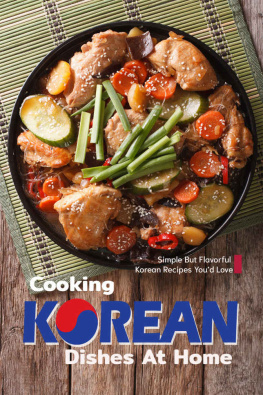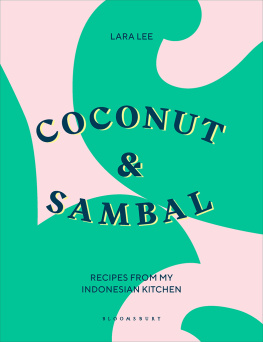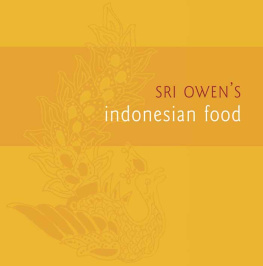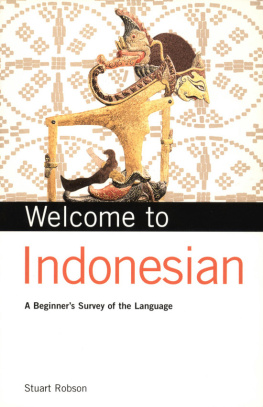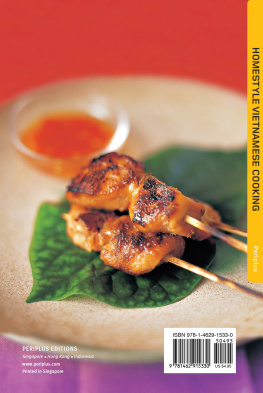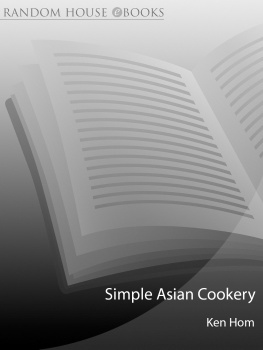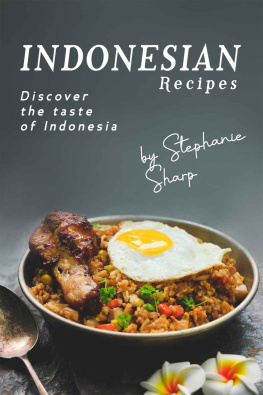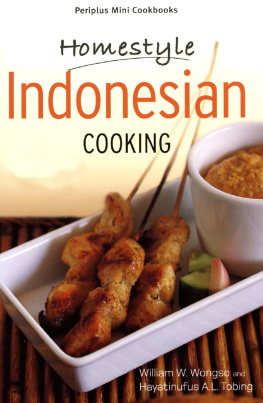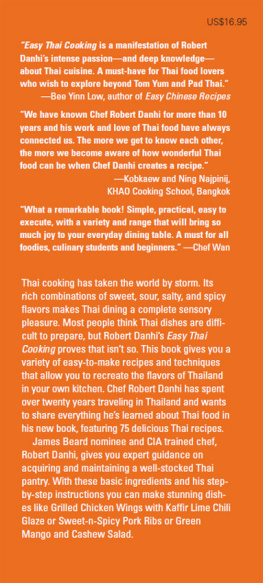

DINA YUEN
Indonesian Cooking
SATAYS, SAMBALS AND MORE
81 Homestyle Recipes with the True Taste of Indonesia
foreword by Glenn Chu
Indigo Restaurant, Hawaii
TUTTLE Publishing
Tokyo | Rutland, Vermont | Singapore
Contents

Chapter One
Chapter Two
Chapter Three
Chapter Four
Chapter Five
Chapter Six
Chapter Seven
Crunchy Bean Sprouts with Dried Fish 102
Chapter Eight

A Symphony of Surprising Flavors

In 1994, a few months before I opened my Honolulu restaurant, Indigo, my wife, Barbara and I traveled to Indonesia and Thailand on a serendipitous shopping and eating trip. Our plan was to find unique furnishings and architectural pieces that would create a sensual ambience for our diners. More than I expected, our travels turned out to be a revelation for my palate as well. This was my first trip to Asiathe first of manyand it greatly deepened my love affair with its glorious food. Barbara and I spent over a month traveling throughout the islands of Java and Bali. While hunting for treasures, we discovered the vibrant, multi-layered cuisine unique to this part of the world. From fiery hot sambals to spicy coconut-based curries, crisp banana fritters to creamy durian ice creameach provided a symphony of delicious, often surprising flavorsmany of which I later adapted into signature Indigo dishes.
Within these pages, a culinary adventure awaits you. With Chef Dina as your expert guide, you can explore the planets largest archipelagothe fabled Spice Islands and its distinctive cuisine in your own kitchen. Dinas clear, easy-to-follow recipes capture the spirit of Indonesian cookinga diverse, little known cuisine she makes accessible to anyone. Ranging from the familiar, such as Chicken and Beef Satay, Fresh Spring Rolls ( Lumpia Basah ), Indonesian Mixed Salad with Creamy Peanut Dressing ( Gado Gado ) and Traditional Nasi Goreng, to the more exotic, such as Spicy Lemongrass Beef ( Daging Asam Pedas ), Carmelized Pork ( Babi Kecap ), Grilled Swordfish with Fragrant Yellow Rice ( Ikan Bakar dengan Nasi Kuning ), or Tamarind Roasted Shrimp ( Asem Udang Bakar ), this collection of tantalizing recipes is certain to delight.
Dina not only shares her many years of cooking knowledge but clearly communicates her love of family and passion for food as well. In our memories, food is deeply rooted to those places and people we love. The Indonesian Cookbook celebrates food, its enticing flavors, tastes, and aromas, and the important role it plays in keeping us connected to friends and family.


My Great Love of Indonesian Cuisine
Ever since childhood, I have equated food with love. Nearly every memory I have of gatherings with family and friends involves being around food. What could possibly be more important in life than great food and great company? My love affair with Indonesian cuisine began long before I even realized thats what it was. Having been blessed with wonderful parents who were world travelers, I had the opportunity to live in and visit many countries. Indonesia was host to a good number of my childhood years, profoundly contributing to what would become my lifetime passion for cooking and feeding people.
Indonesia and I have a very special relationship; it is after all, the place where many of my childhood memories take place. During those formative years, my parents educated my sisters and me on the great importance of the art of travel and food. Naturally, this education included the appreciation of Indonesian cuisine. As a child though, I didnt always realize how lucky I was to have certain experiences or to be in a certain place. It wasnt until years later that I finally grew up enough to fully comprehend the priceless gift my parents had bestowed upon my sisters and me.
Every momentous occasion in Indonesia, whether it is a birthday, house warming, or office opening is celebrated with a Tumpeng . Tumpeng is a spectacular all-in-one feast of turmeric seasoned rice shaped into a gargantuan mountain top, with an assortment of side dishes that can range from the simple and inexpensive (fried chicken and soybean cakes) to the complex and extravagant (grilled seafood, potato cakes and a dozen other yummies). Tumpengan , or the day of Tumpeng , is the one day when all boundaries of race, age, class and any other distinctions are put aside to feast together, give thanks and pray together, celebrate together. An Indonesian superstition dictates that whoever manages to eat the very tip of the rice will enjoy good luck for years to come. I never did have a chance to eat the proverbial mountaintop at any Tumpengan but I can safely say that good luck allowed me to partake in many of those glorious feasts.
I have been very fortunate to have had the opportunity to travel the 17,000 islands of Indonesia, though Ive yet to set foot on each and every one of them. From east to west, north to south, the worlds fourth most populous nation has an astoundingly vast array of indigenous cuisines to boast of, each as uniquely individual as its people and dialects. Masakan Jawa , for example, is the cuisine of eastern Java, predominantly the Surabaya area, famous for spicy salads and rich flavors. The fantasy island of Bali with all its lush greenery and untouched beaches, boasts a beautiful blend of sweet and mildly spicy roasted meats, showcasing the traditional methods of cooking in nature. Western Java offers two distinctly different cuisines, Betawi and Sunda, each with accents portraying Indonesias long cultural and political history.
Along with my parents and siblings, I became a seasoned traveler and eater, going from the finest, world class dining establishments in five diamond hotels such as Ritz Carlton, Four Seasons, Aman Resorts and Mandarin Oriental to frequenting hole-in-the-wall restaurants only locals have known for decades. I ate Indonesian Rijstaffel in its finest presentations on delicate China with linen tablecloths and I ate Es Campur and Bakmi Baso on the streets of Jakarta and Surabaya, (the latter experiences when my mother was not around as she would be terrified of my contracting some dreadful malady from dirty water). The duality of such opposites became an addictive drug to me, each experience offering its unique set of flavors, scents, sounds, and emotions.
In my later teenage years, I experienced many of the most painful and trying moments of my life, losing my beloved grandfather and several other treasured family members. Those devastating losses shaped the course of my spirit and life irrevocably, often manifesting in the strangest of ways. In the kitchen, I began an insatiable quest for acute flavors, emotionally familiar aromas, recreating recipes that were the favorites of people Id lost forever. Aside from photo albums that were sometimes too difficult to look at, the recipes were all I had left to feel their embrace, to hear their laughter and the happy noises of loved ones eating together. From those early years until today, food has become the only viable bridge between those living in the present and those who have passed on.
Next page


